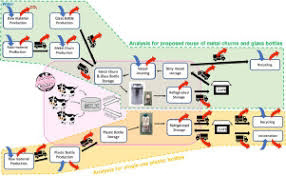Milk Business
Starting a milk business can be a rewarding venture, but it requires careful planning and understanding of the dairy industry. Here are some steps to consider when starting a milk business:
Understand the dairy industry, including supply and demand, market trends, and consumer preferences.
Identify your target market and assess the competition in your area.
Determine the scale of your operation, whether you want to start a small dairy farm or focus on milk processing and distribution.
Decide whether you want to operate a dairy farm or focus on milk processing and distribution.
If starting a dairy farm, consider factors such as land, facilities, cattle, milking equipment, and herd management practices.
If focusing on milk processing, assess the costs of establishing a processing plant, obtaining necessary permits and certifications, and securing a reliable milk supply.
Contact local authorities or agricultural departments to understand the legal and regulatory requirements for starting a milk business in your area.
Ensure compliance with health and safety regulations, milk quality standards, labeling requirements, and any other applicable regulations.
If starting a dairy farm, you'll need to acquire dairy cows or other milk-producing animals, such as goats or sheep, and ensure proper nutrition, health care, and milking practices.
Implement efficient herd management practices, including breeding, calving, milking schedules, and milk quality control.
If processing milk, invest in suitable equipment for pasteurization, homogenization, bottling, and packaging.
Develop standard operating procedures for processing milk while adhering to quality and safety standards.
Identify potential distribution channels, such as local retailers, supermarkets, restaurants, or direct-to-consumer sales.
Develop a marketing strategy to promote your milk products, including branding, packaging, and advertising.
Consider participating in local farmers' markets, community events, or establishing partnerships with local businesses to increase visibility.
Develop a detailed business plan, including projected costs, revenue, and profitability analysis.
Secure financing options, such as loans or grants, if needed.
Implement sound financial management practices to track expenses, monitor cash flow, and ensure profitability.
Implement strict quality control measures throughout the production and processing stages to ensure milk safety and maintain high product standards.
Regularly test the milk for quality, nutritional content, and potential contaminants.
Consider sustainable farming practices, such as efficient water and energy use, waste management, and environmental conservation.
Explore organic or specialty milk production options if there is demand in your target market.
Establish relationships with reliable suppliers for animal feed, veterinary services, and other necessary inputs.
Develop efficient supply chain management practices to ensure a steady and timely flow of milk from the farm to processing facilities or distribution points.
Explore opportunities to diversify your product offerings beyond traditional milk, such as flavored milk, organic milk, lactose-free milk, or value-added dairy products like cheese, yogurt, or ice cream.
Conduct market research to identify potential demand for these products in your target market.
Ensure proper cold chain management during transportation and storage to maintain the quality and freshness of milk.
Invest in refrigerated trucks or partner with reliable logistics providers who can handle the transportation of perishable dairy products.
Choose appropriate packaging materials that preserve the freshness and integrity of the milk while complying with food safety standards.
Design attractive and informative labels that include nutritional information, production dates, and any certifications or quality seals.
Explore technological advancements in the dairy industry, such as automated milking systems, milk analysis equipment, or inventory management software.
Implement efficient record-keeping systems to track milk production, processing, sales, and inventory.
Hire skilled employees or consultants with expertise in dairy farming, milk processing, quality control, marketing, and financial management.
Invest in employee training programs to enhance productivity, safety awareness, and knowledge of industry best practices.
Consider forming partnerships or collaborations with other dairy farmers or processors to leverage shared resources, increase production capacity, or expand market reach.
Explore opportunities for co-branding or joint marketing initiatives to attract a wider customer base.
Establish channels for customer feedback and actively listen to their preferences and suggestions.
Regularly evaluate and improve your products, processes, and customer service based on the feedback received.
Join local or regional dairy industry associations, organizations, or cooperatives to stay updated on industry developments, regulations, and marketing opportunities.
Participate in industry events, seminars, or conferences to network with other professionals and gain insights into emerging trends.
Remember, each milk business is unique, and these additional aspects should be tailored to your specific goals, target market, and available resources. Conduct thorough market research, stay informed about industry advancements, and be adaptable to changing consumer demands to thrive in the milk business.
Follow me more details
Click on the link join now 👇👇





















Comments
Post a Comment